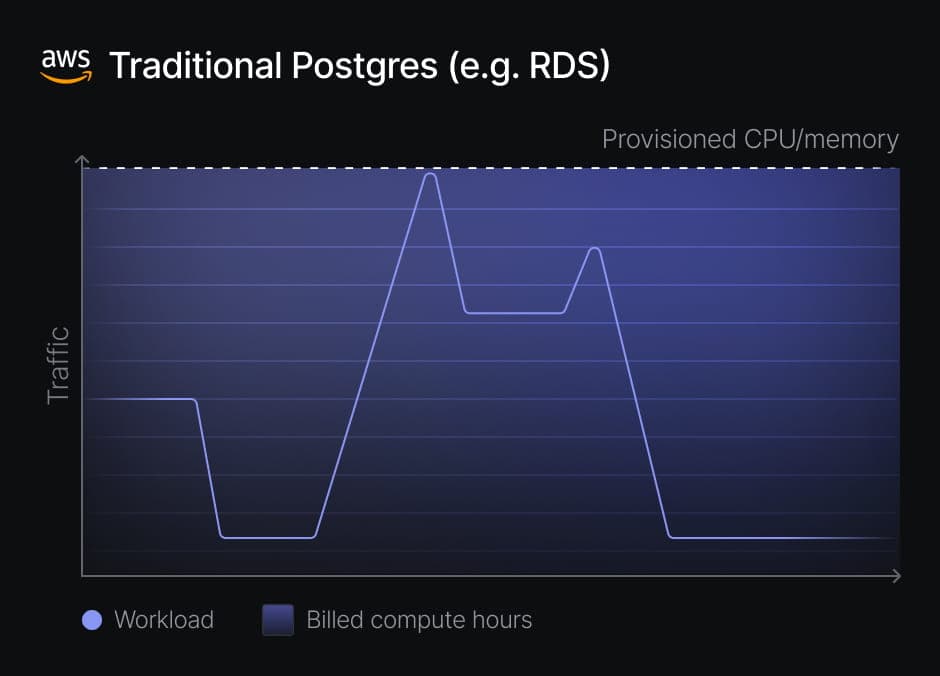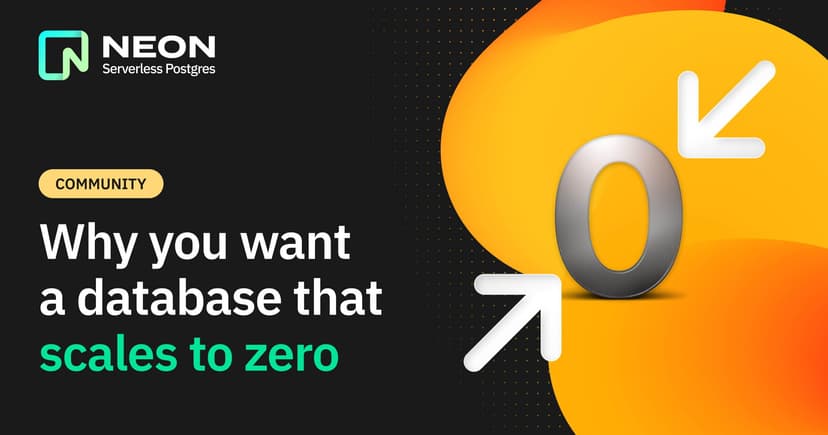Postgres for variable traffic
Neon dynamically scales according to load. Get optimal performance during traffic peaks without overprovisioning.
Variable traffic, fixed costs?
No real-world database has constant demand. To some extent, all modern applications experience variable traffic patterns; for some applications, demand is clearly variable. For example:
- A productivity application might have increased demand during working hours as teams collaborate and complete tasks.
- An AI analytics startup could face heavy processing loads during off-peak hours when batch data jobs are run.
- A gaming platform might experience surges in user activity during evenings when players are most active.
- Online shops might see spikes when certain sales are run… And so on.
Variable load patterns are common, but traditional managed databases require provisioning a fixed amount of CPU and memory. To avoid degraded performance or even outages, it is standard practice to provision for peak traffic, which means paying for peak capacity 24/7 — even though it's needed only a fraction of the time.
Pay only for what you use with Neon
Neon solves this inefficiency via a serverless architecture. By natively separating storage and compute, Neon implements two features that allows you to pay only for the compute you use without investing any manual work: autoscaling and scale to zero.
- Neon autoscales according to traffic, dynamically adjusting CPU and memory as needed.
- Costs are controlled by setting a max autoscaling limit, avoiding unexpected charges.
- Fast performance in production without overpaying. In a typical compute bill, 60% of costs go towards unused resources.
- No manual resizes or downtimes. Neon scales up and down smoothly and immediately.
- Non-prod databases scale to zero when inactive. Instead of paying for compute 24/7, you skim the costs of your supporting databases to a minimum.
- Transparency with open-source architecture. Explore our code in Github.
When we were using MySQL in Azure, we had to manually upgrade the database during the days of peak traffic and downgrade later in the day, which caused a couple of minutes of downtime and a huge waste of time for the team.

How much money are you wasting on unused compute?
Example deployment in RDS
- 1 production database (db.r6g.8xlarge)Runs 24/7
- Dev databases (db.t4g.micro)Used interminently
- Test databases (db.t3.medium)Used interminently
Input parameters
Deployment
Number of test databases
Number of dev databases
Usage
How many hrs/day are test databases running?
How many hrs/day are dev databases running?
How many hrs/ day do you hit peak traffic?
Dollars overpaid
Bill that could be saved
With scale to zero and autoscaling
Provisioning for peak load is highly inefficient cost-wise, especially taking into consideration that you will most likely be running not only one database instance, but many.
- You'll need at least one production database, but also separate instances for development, testing, and staging.
- Your production database will run 24/7, but only run at peak capacity when you reach peak load.
- Your non-prod databases will only run a few hours per day.
- But for each one of these databases, you'll be paying for peak compute, 100% of the time - even if you don't use it.
Want a price estimation for your particular use case?
Why Neon vs Aurora Serverless
Before choosing Neon, we also considered Aurora, but the opacity of the pricing model did not convince us and costs seemed to rise quickly.

The Neon architecture is inspired in Amazon Aurora, but with some key differences:
- Neon compute costs are up to 75% cheaper vs Aurora Serverless v2.
- Neon scales to zero, Aurora Serverless does not.
- Neon provisions instances in < 1 s, compared to Aurora's up to 20 min.
- Neon uses transparent compute units, vs the ACU abstraction in Aurora Serverless.
- Neon supports database branching with data and schema via copy-on-write, improving development workflows.
- Neon's read replicas don't require storage redundancy, differently than Aurora's.
- Connection pooling is built-in in Neon, vs Aurora's RDS Proxy.















